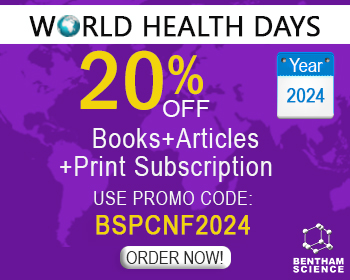Abstract
Background: Metal nanomaterials are widely used in various fields, including targeted therapy and diagnosis. They are extensively used in targeted drug delivery and local treatments. However, the toxicity associated with these materials could lead to severe adverse health effects.
Methods: In this study, we investigated the relationships between the toxicity and structures of metal nanoparticles by using theoretical calculations and quantitative structure-activity relationships. Twenty four physicochemical descriptors and toxicity data of 23 types of metal nanoparticles were selected as samples, and a multiple linear regression model was established to obtain a toxicity prediction equation with 5 descriptors with an R2 of 0.910. Structures of copper nanoparticles were designed based on the model, and the structure with low toxicity was searched. The multiple nonlinear regression model was used to further improve the prediction accuracy.
Results: The R2 values were 0.995 in the training set and 0.988 in the test set, which indicated that the prediction accuracy improved. Based on the result of multiple linear regression, we designed copper nanoparticles with low toxicity.
Conclusion: The study confirmed that the quantitative structure-activity relationship was a reasonable method for predicting the toxicity and designing the structures with low toxicity of metal nanoparticles.
Keywords: Metal nanoparticles, Medical applications, Targeted drug delivery, Toxicity, Density functional theory, Quantitative structure-activity relationships.
[http://dx.doi.org/10.1016/j.jhazmat.2011.04.005] [PMID: 21546158]
[http://dx.doi.org/10.1016/S1748-0132(07)70017-8]
[http://dx.doi.org/10.1039/C4EE00370E]
[http://dx.doi.org/10.1063/1.1829166]
[http://dx.doi.org/10.1126/science.1133162]
[http://dx.doi.org/10.1016/j.ejpb.2015.03.018] [PMID: 25813885]
[http://dx.doi.org/10.1088/0960-1317/20/12/125010]
[http://dx.doi.org/10.2147/IJN.S128996] [PMID: 28260889]
[http://dx.doi.org/10.13005/ojc/31.Special-Issue1.33]
[http://dx.doi.org/10.1039/c4nr01234h] [PMID: 24842463]
[http://dx.doi.org/10.1002/wnan.103] [PMID: 20681021]
[http://dx.doi.org/10.1016/j.nano.2011.08.002] [PMID: 21856277]
[http://dx.doi.org/10.1080/08958370701493282] [PMID: 17886052]
[http://dx.doi.org/10.1021/ci060117s] [PMID: 16859285]
[http://dx.doi.org/10.1016/j.jtusci.2016.05.004]
[http://dx.doi.org/10.1016/S0887-2333(01)00060-1]
[http://dx.doi.org/10.1038/nnano.2011.10] [PMID: 21317892]
[http://dx.doi.org/10.1016/j.bmc.2005.03.011] [PMID: 15848752]
[http://dx.doi.org/10.1016/j.chemosphere.2006.10.057] [PMID: 17184820]
[http://dx.doi.org/10.1021/nl904299c] [PMID: 20151700]
[http://dx.doi.org/10.1021/acs.jpclett.6b01198] [PMID: 27530730]
[http://dx.doi.org/10.1016/j.fsi.2012.02.014] [PMID: 22366066]
[http://dx.doi.org/10.2175/106143015X14338845156380] [PMID: 26420104]
[http://dx.doi.org/10.17221/7922-VETMED]
[http://dx.doi.org/10.1139/z87-098]
[http://dx.doi.org/10.1007/s00128-004-0305-4] [PMID: 15199986]
[http://dx.doi.org/10.1007/BF02783678] [PMID: 1384613]
[http://dx.doi.org/10.1016/0025-326X(79)90217-0]
[http://dx.doi.org/10.1002/tox.20073] [PMID: 15712322]
[http://dx.doi.org/10.1007/978-1-4612-3004-5]
[http://dx.doi.org/10.1016/S0045-6535(00)00574-9] [PMID: 11534906]
[http://dx.doi.org/10.1016/0043-1354(74)90051-7]
[http://dx.doi.org/10.1080/15298667991430596] [PMID: 532785]
[http://dx.doi.org/10.1023/A:1008073215919] [PMID: 10216832]
[http://dx.doi.org/10.1002/sim.1186] [PMID: 12111919]
[http://dx.doi.org/10.1007/s11135-006-9018-6]
[http://dx.doi.org/10.1063/1.555985]
[http://dx.doi.org/10.1179/cmq.1984.23.3.309]
[http://dx.doi.org/10.1016/j.tiv.2012.08.021] [PMID: 22940466]
[http://dx.doi.org/10.1016/j.toxlet.2005.08.011] [PMID: 16229976]
[http://dx.doi.org/10.1016/j.chemosphere.2012.07.010] [PMID: 22868195]


























